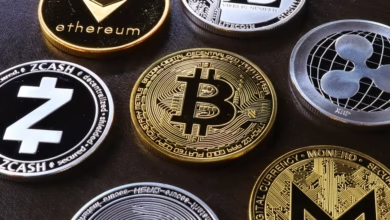The Golden Thread: Exploring the Role of Gold in the Global Jewelry Market and Its Investment Potential

Gold has long held a revered place in human history, symbolizing wealth, status, and beauty, especially in the realm of jewelry. As we delve into the intricate role of gold in the global jewelry market, it becomes evident that this precious metal is more than just a decorative element; it is deeply intertwined with trends in gold prices, investment strategies, and cultural significance. The jewelry sector not only reflects global gold demand but also plays a pivotal role in shaping market dynamics surrounding gold mining, refining, and trading.
In this article, we will explore the significance of gold jewelry within the larger context of the gold market, highlighting key trends and insights that influence its valuation. We will also examine gold as a safe haven asset, discussing investment strategies such as gold ETFs and physical gold, and how these relate to market fluctuations driven by inflation and global economic conditions. Furthermore, we will look ahead at the future of gold in jewelry, focusing on sustainable practices and technological innovations that are reshaping the gold trade. Join us as we navigate the multifaceted relationship between gold and jewelry, uncovering its vital role in the global economy and its enduring allure.
- 1. The Significance of Gold Jewelry in the Global Gold Market: Trends and Insights
- 2. Understanding Gold as a Safe Haven Asset: Investment Strategies and Market Dynamics
- 3. The Future of Gold in Jewelry: Sustainable Practices and Technological Innovations
1. The Significance of Gold Jewelry in the Global Gold Market: Trends and Insights
Gold jewelry holds a significant place in the global gold market, acting as both a cultural symbol and a robust investment option. The trends and insights surrounding gold jewelry reflect broader shifts in consumer behavior, economic conditions, and investment strategies.
As a safe haven asset, gold has consistently attracted investors during times of economic uncertainty and inflation. In recent years, the rising global demand for gold jewelry has mirrored the fluctuations in gold prices, with consumers viewing gold not just as adornment but as a viable investment. In countries like India and China, where gold jewelry is a traditional gift and status symbol, the demand remains strong. This cultural attachment contributes to the sustained interest in gold, often driving up gold market trends and prices.
Moreover, the emergence of gold technology has enhanced the appeal of gold jewelry. Innovations in design and manufacturing have led to the creation of luxury gold pieces that combine artistry with investment potential. The use of gold ETFs and gold futures has also made it easier for individuals to invest in gold indirectly, further boosting the allure of gold as a collectible and investment vehicle.
The practice of gold recycling is another vital aspect of the gold jewelry market, allowing for the sustainable use of gold reserves. This not only helps in maintaining supply without extensive gold mining but also addresses environmental concerns related to sustainable gold mining practices. As consumer awareness grows, the demand for ethically sourced gold has risen, leading to increased scrutiny over gold trade practices and gold smuggling issues.
Central banks also play a crucial role in the global gold market, holding significant gold reserves as part of their monetary policy strategy. This institutional demand can greatly influence gold prices and market analysis. Additionally, the relationship between gold and cryptocurrency has sparked interest among investors looking for alternative assets, leading to discussions about gold coins investing and the future of gold bullion as a standard for wealth preservation.
In summary, the significance of gold jewelry in the global gold market is intertwined with cultural values, investment strategies, and market dynamics. As trends evolve, gold jewelry continues to be a key player in the larger narrative of gold production, refining, and the ongoing quest for sustainable practices in the gold industry.
References:
1. World Gold Council. (2023). Gold Demand Trends Q2 2023. Retrieved from https://www.gold.org
2. S&P Global. (2023). The Role of Gold in Investment Portfolios. Retrieved from https://www.spglobal.com
3. Gold Fields. (2023). Sustainable Gold Mining Practices. Retrieved from https://www.goldfields.com
2. Understanding Gold as a Safe Haven Asset: Investment Strategies and Market Dynamics
Gold has long been regarded as a safe haven asset, a status that has only solidified in recent years due to various economic factors. As investors seek stability during periods of market volatility, the allure of gold investment remains strong. Understanding the dynamics of the gold market is essential for anyone looking to navigate this complex landscape.
The relationship between gold and inflation is a critical aspect of its appeal. Historically, gold prices tend to rise when inflation increases, as it serves as a hedge against the eroding purchasing power of fiat currencies. This characteristic has made gold particularly attractive to investors during times of economic uncertainty. Central banks around the world often increase their gold reserves in response to inflationary pressures, which further bolsters the demand for gold.
Investment strategies involving gold can take various forms, including gold ETFs (exchange-traded funds), gold futures, and physical gold purchases, such as gold bullion or gold coins. Gold ETFs offer a convenient way for investors to gain exposure to gold prices without the need to store the physical asset. Alternatively, gold coins and collectibles appeal to those interested in both investment and aesthetic value, as they can appreciate in value over time due to their rarity and condition.
In addition to traditional investment methods, the rise of gold technology has introduced innovative ways to invest in gold. For example, gold recycling has emerged as a sustainable practice, enabling investors to acquire gold from previously owned jewelry or industrial applications. This not only meets the growing global demand for gold but also aligns with the principles of sustainable gold mining, reducing the environmental impact of gold production.
Market dynamics also play a crucial role in shaping gold prices. Fluctuations in gold market trends can be influenced by geopolitical events, changes in interest rates, and even the performance of cryptocurrencies. As some investors turn to digital assets, the correlation between gold and cryptocurrency can affect gold's position as a safe haven asset, creating both challenges and opportunities in the gold trade.
In summary, understanding gold as a safe haven asset requires a multifaceted approach, considering investment strategies, market dynamics, and the evolving landscape of gold production and trade. As global gold demand continues to shape the market, investors must stay informed about gold prices, gold market analysis, and the various avenues available for gold investing.
3. The Future of Gold in Jewelry: Sustainable Practices and Technological Innovations
As the global jewelry market evolves, the future of gold in jewelry is increasingly intertwined with sustainable practices and technological innovations. Consumers are becoming more conscious of their purchasing choices, prompting a shift towards ethical sourcing and production methods. Sustainable gold mining practices are gaining traction, particularly in response to concerns over environmental impacts and social responsibility. This trend is essential, as it not only addresses the ethical implications of gold extraction but also aligns with a growing demand for luxury gold items that are sourced responsibly.
Technological advancements are playing a significant role in reshaping the gold landscape. Innovations in gold refining and recycling processes are making it easier to recover and repurpose gold from old jewelry and electronic waste. This not only reduces the need for new gold mining but also supports the circular economy. Gold recycling can contribute to the gold market trends by influencing gold prices, as recycled gold often provides a more stable supply to meet global gold demand without the environmental costs associated with traditional mining.
Moreover, the integration of technology in the jewelry sector is enhancing transparency and traceability in the gold trade. Blockchain technology, for instance, is being employed to track the journey of gold from mine to market, ensuring that consumers can make informed decisions about their gold jewelry purchases. This level of accountability is particularly important in combating issues such as gold smuggling, which undermines legitimate trade and ethical sourcing efforts.
As gold continues to be viewed as a safe haven asset, especially during periods of economic uncertainty, the interplay between gold and inflation will further influence consumer behavior in the jewelry market. With central banks increasing their gold reserves, the perception of gold as a stable investment will likely drive demand for gold collectibles and investment products like gold ETFs and gold futures.
In conclusion, the future of gold in jewelry is poised to be shaped by sustainable practices and innovative technologies. As awareness of ethical and environmental issues grows, the jewelry industry must adapt to meet these new consumer expectations while leveraging advancements that ensure gold remains a sought-after commodity in an ever-changing global landscape.
In conclusion, gold jewelry plays a pivotal role in the global gold market, influencing both consumer trends and investment strategies. As we've explored, the significance of gold jewelry is not only tied to its aesthetic appeal but also to its status as a safe haven asset, particularly in times of economic uncertainty. The fluctuations in gold prices and the dynamics of the gold market underscore the importance of understanding gold as an investment, whether through gold ETFs, gold futures, or the acquisition of physical gold like gold coins and bullion.
Moreover, the future of gold in jewelry is increasingly intertwined with sustainable practices and technological innovations. As consumers become more conscious of ethical sourcing, sustainable gold mining and recycling efforts are set to reshape the landscape of the gold trade. This aligns with the growing global demand for luxury gold items that are responsibly produced.
In light of these factors, investors and consumers alike should remain vigilant in monitoring gold market trends, including the influence of central banks on gold reserves and the evolving relationship between gold and cryptocurrency. As we look ahead, the interplay between gold and inflation, alongside advancements in gold technology, will undoubtedly continue to impact gold production and refining processes, further enriching the narrative of gold jewelry in the global economy. By embracing these insights, stakeholders can navigate the complexities of the gold market and make informed decisions that align with both financial goals and ethical values.
References:
[Include a list of sources cited in the article here, formatted in APA style]




